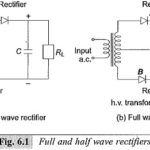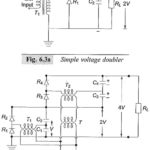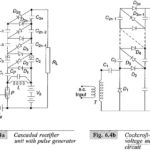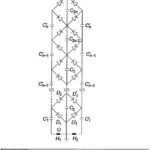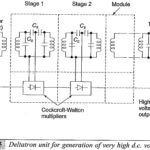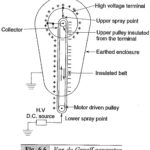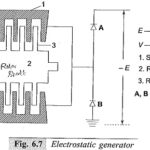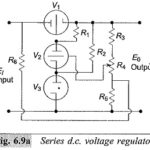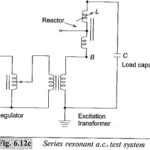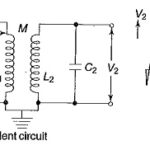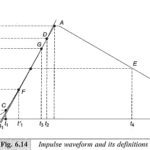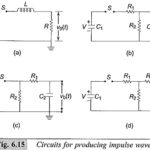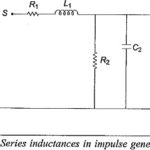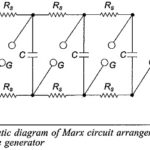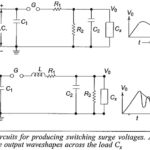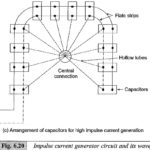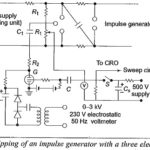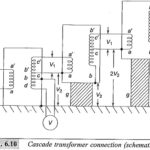Generation of High Voltage and Currents Articles:
Different Types of High Voltages: In the fields of electrical engineering and applied physics, Different Types of High Voltages (d.c., a.c,, and impulse) are required for several applications. For example, electron microscopes and x-ray units require high d.c. voltages of the … (Read More)
Half and Full Wave Rectifier Circuits: Half and Full Wave Rectifier Circuits for producing high d.c. voltages from a.c. sources may be (a) Half wave, (b) Full wave, or (c) Voltage doubler type rectifiers. The rectifier may be an electron tube or a … (Read More)
Voltage Doubler Circuits: Both full wave and half wave rectifier circuits produce a d.c. voltage less than the a.c. maximum voltage. When higher d.c voltages are needed, a Voltage Doubler Circuits or cascaded rectifier doubler circuits are used. The schematic diagram … (Read More)
Voltage Multiplier Circuits: Cascaded Voltage Multiplier Circuits for higher voltages are cumbersome and require too many supply and isolating transformers. It is possible to generate very high d.c. voltages from single supply transformers by extending the simple voltage doubler circuits. This … (Read More)
Voltage Drop on Load and Regulation: The change of average Voltage Drop on Load from the no load theoretical value expressed as a percentage of no load voltage is called the Regulation. The change in voltage (i.e.) the voltage drop ΔV … (Read More)
Deltatron Circuit or Cascaded Modular Voltage Multipliers: A combination of Cockcroft-Walton type voltage multiplier with cascaded transformer d.c. rectifier is developed recently for very high voltages but limited output currents having higltstability, small ripple factor and fast regulation. One such unit is … (Read More)
Van De Graaff Generator Working Principle: The schematic diagram of a Van De Graaff Generator Working Principle is shown in Fig. 6.6. The generator is usually enclosed in an earthed metallic cylindrical vessel and is operated under pressure or in vacuum. … (Read More)
Electrostatic Generators: Van de Graaff generators are essentially high voltage but low power devices, and their power rating seldom exceeds few tens of kilowatts. As such Electrostatic Generators machine which effectively convert mechanical energy into electrical energy using variable capacitor principle … (Read More)
Series DC Voltage Regulator: The output voltage of a d.c. source, whether it is a rectifier or any other machine, changes with the load current as well as with the input voltage variations. In order to maintain a constant voltage at … (Read More)
Resonant Transformers: The equivalent circuit of a high voltage testing Resonant Transformers consists of the leakage reactance of the windings, the winding resistances, the magnetizing reactance, and the shunt capacitance across the output terminal due to the bushing of the high … (Read More)
Generation of High Frequency AC High Voltage: High Frequency AC High Voltage are required for rectifier d.c power supplies. Also, for testing electrical apparatus for switching surges, High Frequency AC High Voltage damped oscillations are needed which need high voltage high … (Read More)
Standard Impulse Wave Shapes: Transient overvoltages due to lighting and switching surges cause steep build-up of voltage on transmission lines and other electrical apparatus. Experimental investigations showed that these waves have a rise time of 0.5 to 10 μs and decay … (Read More)
Circuits for Producing Impulse Waves: A double exponential waveform of the type mentioned in Eq. (6.15) may be produced in the laboratory with a combination of a series R-L-C circuit under over damped conditions or by the combination of two R-C … (Read More)
Series Inductance in Impulse Generator Circuit: Often Series Inductance in Impulse Generator Circuit are required to test equipment with large inductance, such as power transformers and reactors. Usually, generating the impulse voltage wave of proper time-to-front and obtaining a good voltage … (Read More)
Multistage Impulse Generator Circuit: In the early discussion, the generator capacitance C1 is to be first charged and then discharged into the wave shaping circuits. A single capacitor C1 may be used for voltages up to 200 kV. Beyond this voltage, … (Read More)
Generation of Switching Surges: Nowadays in extra high voltage transmission lines and power systems, switching surges is an important factor that affects the design of insulation. All transmission lines rated for 220 kV and above incorporate switching surge spark overvoltage for … (Read More)
Generation of Impulse Current Generator Output Waveform: Lightning discharges involve both high voltage impulses and high current impulses on transmission lines. Protective gear like surge diverters have to discharge the lightning currents without damage. Therefore, Generation of Impulse Current Generator Output … (Read More)
Tripping of Impulse Generator: In large impulse generator, the spark gaps are generally sphere gaps or gaps formed by hemispherical electrodes. The gaps are arranged such that sparking of one gap results in automatic sparking of other gaps as overvoltage is … (Read More)
Cascade Transformer Connection: Figure 6.10 shows the Cascade Transformer Connection units in which the first transformer is at the ground potential along with its tank. The second transformer is kept on insulators and maintained at a potential of V2, the output … (Read More)
